Rafael Chwoles Museum |
← |
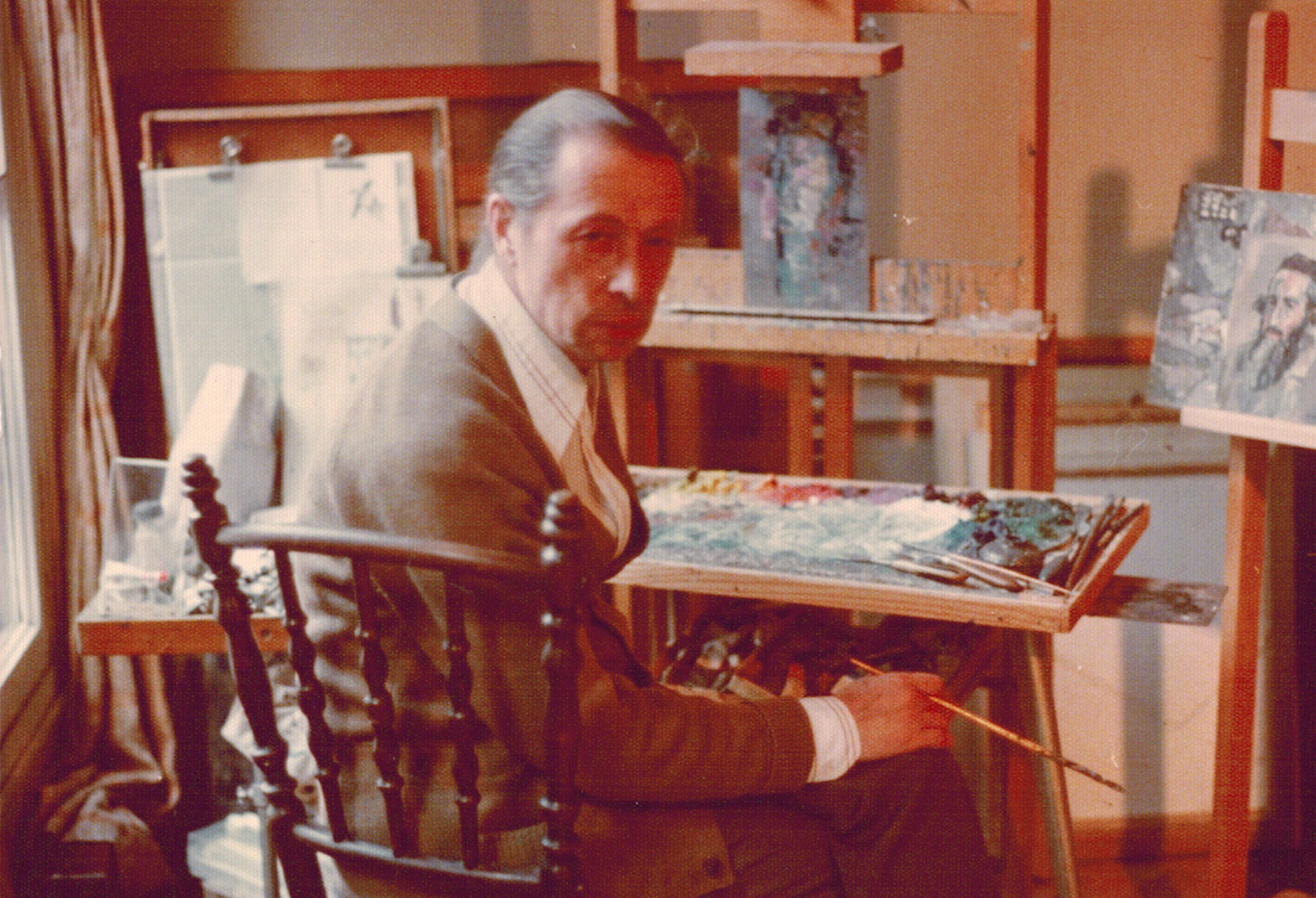
Rafael Chwoles in his studio in Paris. Chwolesų šeimos archyvo nuotrauka
The Museum of Culture and Identity of Lithuanian Jews opens on 18 January at 4A Pylimo Str. At the same time, the museum of Rafael Chwoles, one of the greatest Litvak artists of the 20th century who documented the destruction of the spiritual and social life of Lithuanian Jews, opens its doors to visitors.
A significant part of Chwoles` artistic legacy has been handed over to the museum by artist`s sons Milij and Alexandre Chwoles, who live in Paris.
The Rafael Chvoles Museum is located on the fourth floor of The Museum of Culture and Identity of Lithuanian Jews. The three halls of the exhibition cover the three main periods of R. Chwoles work - Vilnius, Warsaw and Paris.
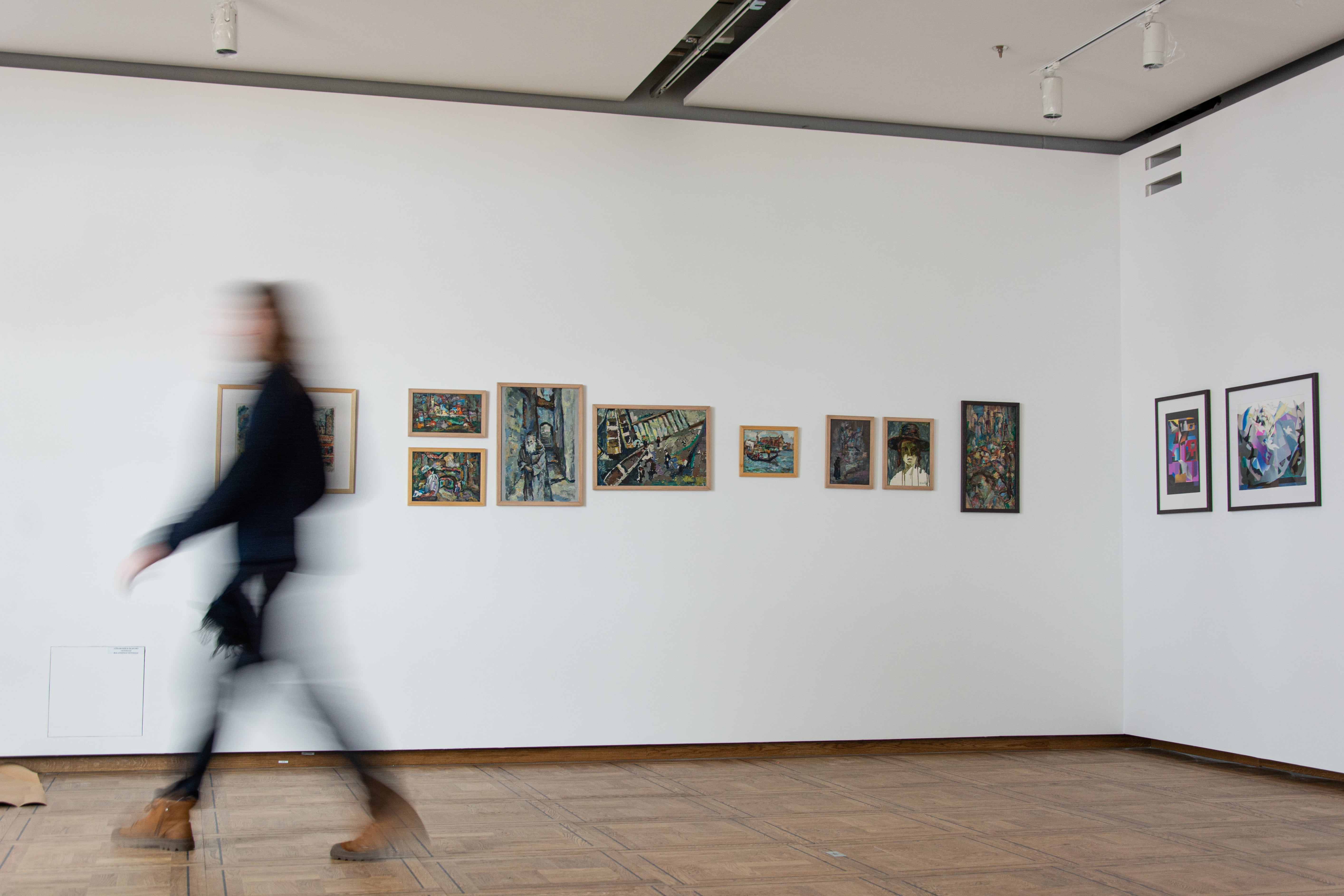
Rafael Chwoles Museum. Gabrielės Globytės nuotrauka
Vilnius period (1913-1958)
In his hometown Vilnius, Rafael Chwoles grew up, studied and actively participated in the activities of interwar Vilna Jewish cultural organizations. He encountered anti-Semitism and persecution during WWII, and experienced the ideological reality of the post-war period in the Soviet era. The artist spent four decades in Vilnius, where he created the most significant series of works to commemorate the destroyed Jewish heritage of the city. Vilnius left an imprint on Chwoles’ life: even after his move to the West, the artist did not stop painting images of his hometown, drawing inspiration from sketches and memories from the post-war years.
Rafael Chwoles was born in Vilnius on April 25, 1913. He attended the Vilnius Humanities Gymnasium in Yiddish. In 1934, he graduated from the School of Artistic Crafts with a degree in decorative painting. He took private lessons with Marijonas Kulieša, Eugeniusz Kazimierowski, Moses Leibovski, Aleksander Szturman and Ber Zalkind. Chwoles belonged both to the group of socialist leftist young Jewish writers and artists, Jung Vilne, and to the Vilnius Jewish Artists’ Association, which united old artists.
.jpg)
Rafaelis Chvolesas, Gaono sinagogos griuvėsiai, 1946. Guašas ant popieriaus, 46x31
(194610527) VŽM 9196/21
In 1939-1941, Chwoles worked in the art department of the Vileyka region (now Belarus), headed the School of Fine Arts, and participated in exhibitions. The artist spent WWII in Russia. During the Holocaust, his closest relatives perished in the Vilna Ghetto.
Chwoles returned to post-war Vilnius as soon as the war was over and realized that his mission as an artist was to immortalize the destroyed Old Town of Vilnius. He left a number of sketches depicting the ruins of Lithuania’s devastated Jerusalem. In 1945-1947, he created his most famous series, Vilna Ghetto. The nostalgic images of the lost Jewish Vilna did not correspond to the themes of “bright socialist realism” set by the Stalinist censorship. In the post-war years, Chwoles’ work was appreciated only by his colleagues, i.e., other artists. Not a single artist’s solo exhibition was held in post-war Vilnius.
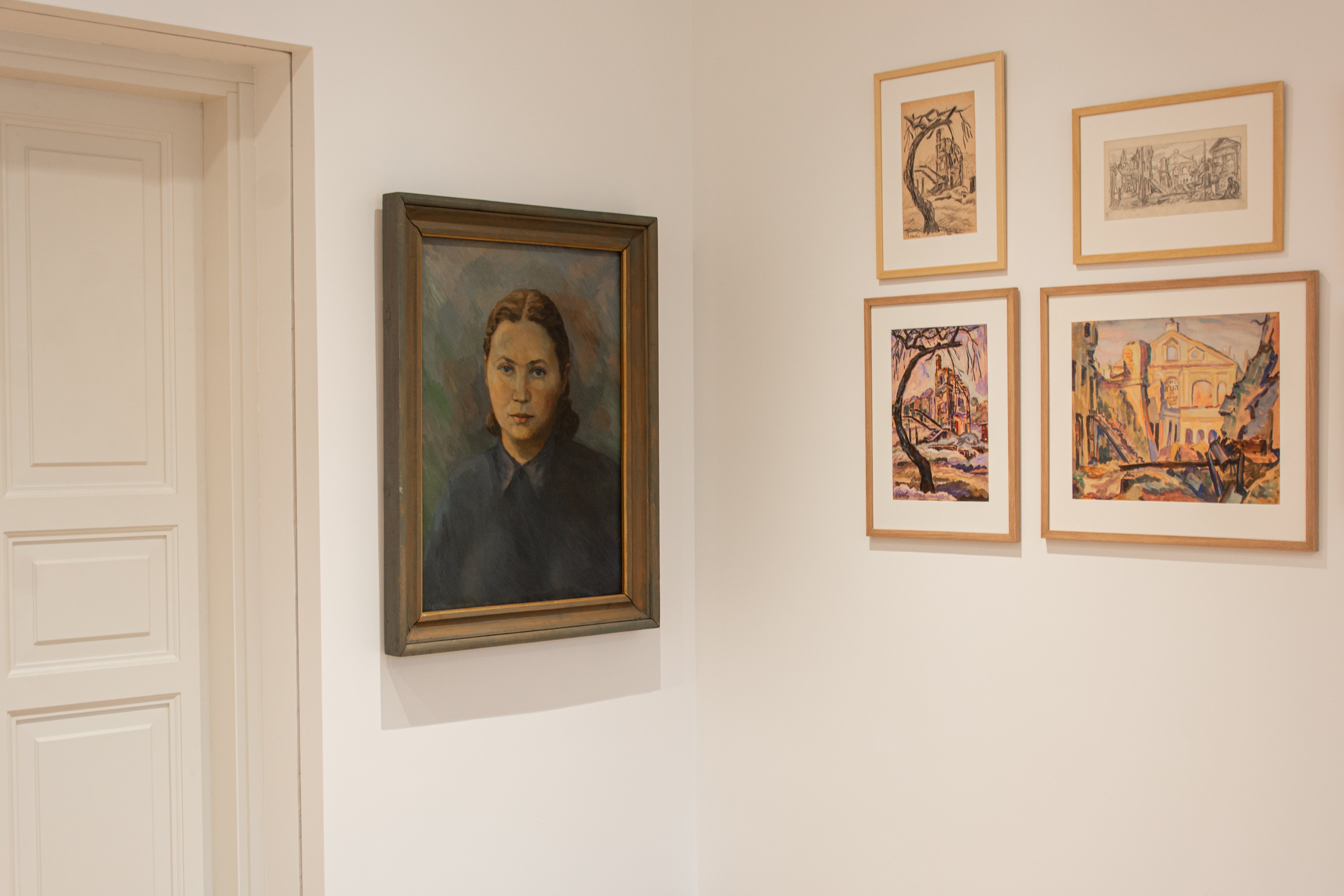
Rafael Chwoles Museum. Gabrielės Globytės nuotr.
Rafael Chwoles’ Life and Work in Warsaw (1959-1969)
In Warsaw, Rafael Chwoles joined the thriving Jewish cultural life. He had seven solo exhibitions, traveled the world as a UNICEF artist, illustrated books, designed film and theatre posters as well as book covers.
The decision to move to Warsaw was the right choice for Chwoles. The Social and Cultural Association of Jews in Poland (TSKŻ) was active in the city. In 1964, the artist was elected head of the TSKŻ Cultural Commission. Western Jewish organizations supported the Association, the Polish government was also in favor of it, and so the conditions were suitable for the TSKŻ creation.
.jpg)
Rafaelis Chvolesas, Requiem (Smuikininkas), 1965.
Aliejus ant kartono WA 49,5x34,5 (196510573) VŽM 9196/97
As early as 1959, an exhibition of Chwoles’ works, Motifs of the Vilna Ghetto, was organized. In 1960, another exhibition, Native Places, took place. Both events were very successful, attended by many refugees who after fleeing Vilnius settled in Poland and longed for the lost city. In 1963, Chwoles had a solo exhibition at the Galerie du Passeur in Paris. In the same year, he traveled to Morocco to create a series of postcards for UNICEF on behalf of the American Jewish Joint Distribution Committee (AJJDC), a worldwide Jewish humanitarian organization.
During his time in Warsaw, Chwoles did not ignore the theme of his hometown. He painted using the sketches of the streets of Vilnius, Jewish religious rituals and festivals.
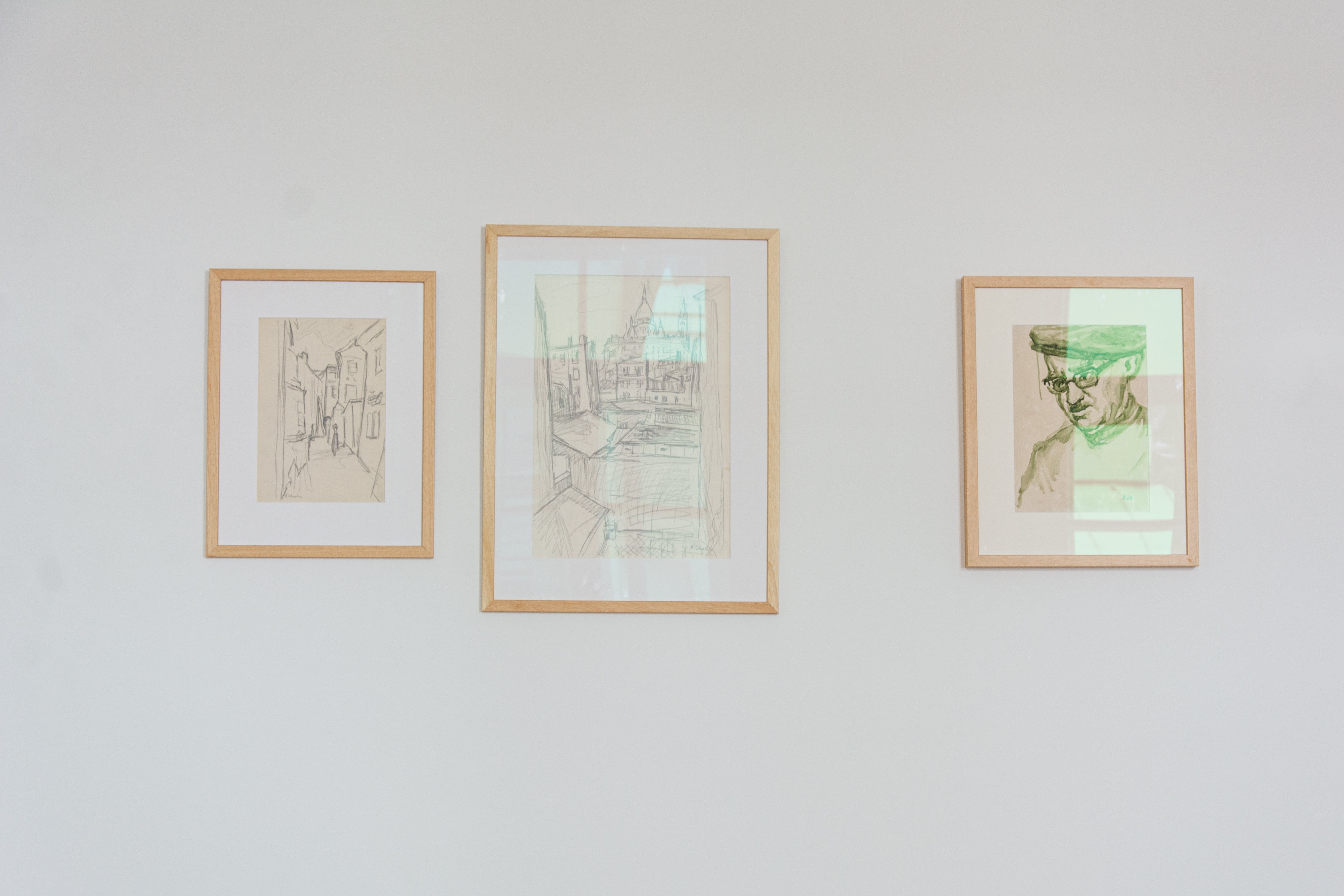
Rafael Chwoles Museum. Gabrielės Globytės nuotrauka
Three decades in Paris
In Paris, Rafael Chwoles devoted himself entirely to his work: away from public life, he painted images of Vilnius from memory, created nostalgic scenes of Jewish folklore, and sought inspiration from his travels in France, Italy and Israel.
It was not difficult for Chwoles to make up his mind: If he was to start his life anew, it would be in Paris, the artists’ mecca, which images already crowded his sketch albums. Living in one of the world’s art centers, Chwoles distanced himself from the artistic movements that emerged in the late 20th century (and from the revolutionary political context), and continued to paint in a nostalgic manner influenced by the post-Impressionist, Expressionist and modernist movements of École de Paris.
.jpg)
Rafaelis Chvolesas, Dailininkas Jeruzalėje, 1983. Aliejus ant kartono IV 24x33 (198310383) VŽM 9196/54
He settled in Montmartre, which reminded him of the artists of the previous era. He created a series of works on the theme of Jewish musicians. In it, one recognizes the Chagall’s violinist playing requiem for the Holocaust victims in the streets of the Jewish quarter of Vilnius or the minor but still nostalgic scale at shtetl weddings. The artist’s later works were influenced by Eastern European Jewish folklore and mysticism.
The great part of legacy of the Paris period consists of paintings and numerous sketchbooks from Chwoles’ travels in Israel (where his sisters Rivka Chwoles-Lichtenfeld and Sofia Leikovich lived, as well as friends such as Avrom Sutzkever), Venice, Brittany and Normandy. Chwoles then drifted towards expressive painting. He was fond of painting vegetation and floral bouquets. In the 1980s, the artist found himself in search of new ways of expression and began to create collages.
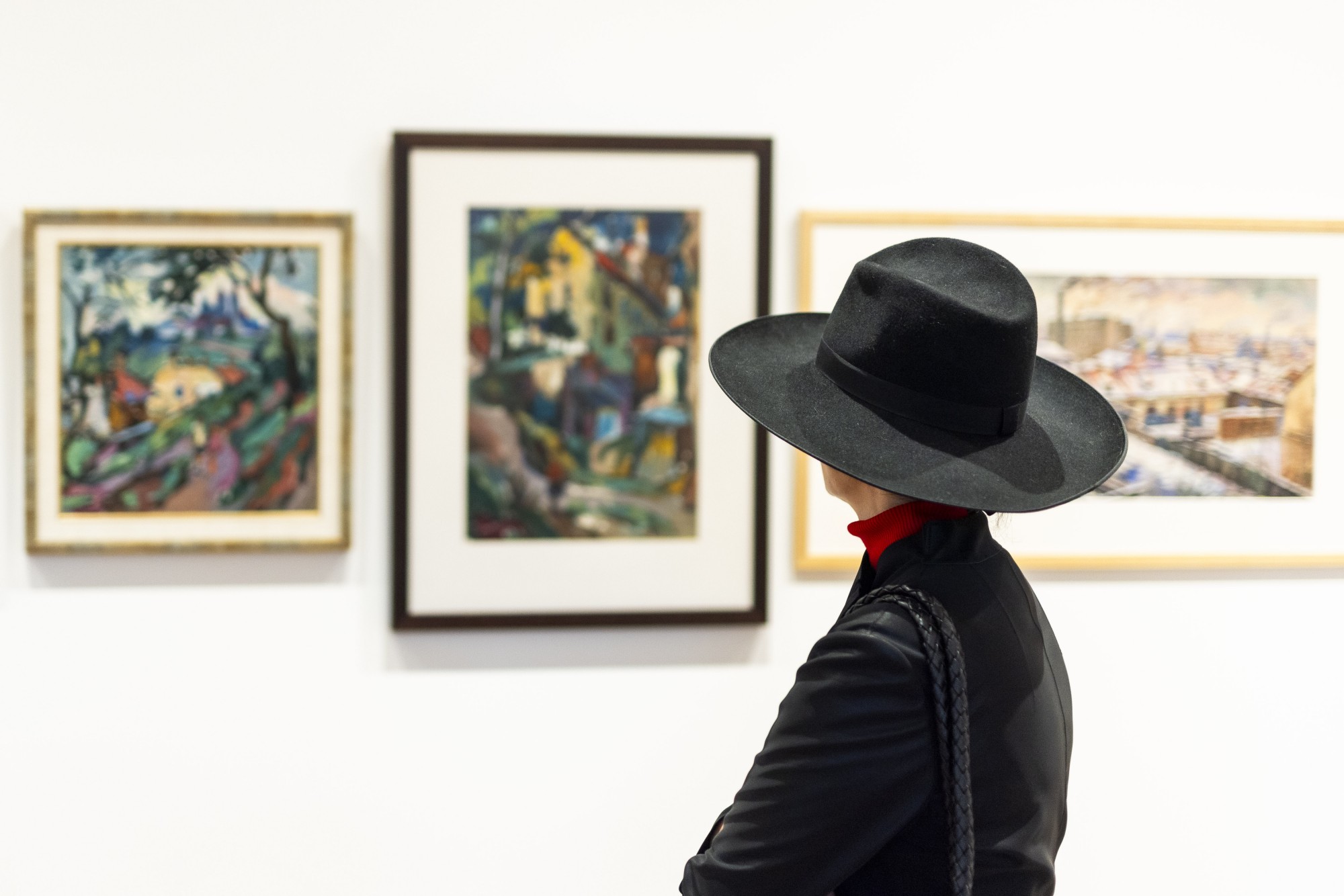
Rafael Chwoles Museum. Irmanto Gelūno nuotr.
| ↑ | ← |
